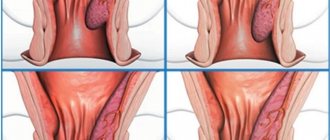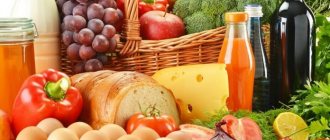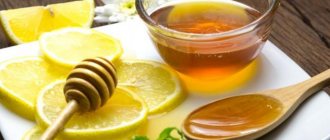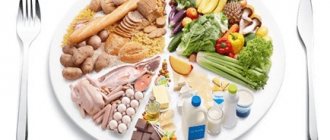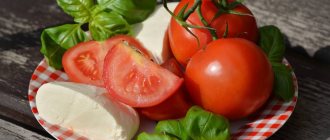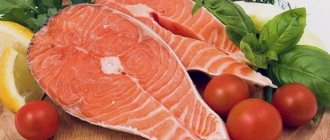What is the 5p diet
This nutritional system is aimed at reducing the production of pancreatic enzymes and improving metabolism in the gastrointestinal tract.
It is used in therapy:
- acute and chronic pancreatitis;
- cholecystitis;
- gallstone disease.
Table No. 5p is also useful for fatty liver hepatosis.
For the first few days, the patient is prescribed fasting. Subsequently, the entire period of following the diet is divided into 2 parts, during which foods are gradually included in the patient’s diet so as not to provoke a sharp increase in load and relapse. Coarse fiber and extractive substances are excluded.
The first part imposes strict restrictions, and the second (softer) involves the introduction of additional dishes into the diet.
The 5p diet is aimed at reducing the load on the digestive organs.
Consequences of dieting
Following a diet for pancreatitis is aimed at maximizing sparing of the pancreas, reducing the inflammatory process in the gland, relieving a painful attack and preventing the development of possible complications.
In addition, the diet normalizes the production of digestive enzymes, blocks the pancreas from “eating” itself, maintains the integrity of the intestinal mucosa, limits the entry of toxic substances into the body, and normalizes the functioning of the gastrointestinal tract as a whole.
In case of non-compliance with the diet during acute pancreatitis or exacerbation of chronic pancreatitis, the following complications arise:
- jaundice (due to impaired outflow of bile);
- bleeding in the digestive tract (stomach ulcers, varicose veins of the esophagus, Mallory-Weiss syndrome);
- pleurisy;
- damage to the duodenum (obstruction);
- diabetes.
Sources:
- Ministry of Health of the Russian Federation. Medical nutrition standards. Methodological manual, 2021
- Order of the Ministry of Health of the Russian Federation dated September 23, 2021 N 1008n “On approval of the procedure for providing patients with therapeutic nutrition”
Features of preparing table dishes 5p
Dietary table No. 5p requires eating food that will not irritate or injure the gastrointestinal tract.
Dishes need to be prepared by boiling, steaming and stewing. The use of hot spices and large amounts of salt is unacceptable. The meat should be cut into small pieces before boiling. This treatment will help remove extractive substances from it. For pancreatitis, patients can consume vegetarian pureed soups. Porridges should be slimy. During the first phase after heat treatment, the products are additionally wiped. During this period, fruits can only be used for making jellies, jelly, etc. In the second phase of the diet, there is no need to grind the dishes, but they should have a soft consistency. Recommended food temperature is +23…+35°C.
Authorized Products
The table shows the main products that can be included in the diet:
| View | Product Features |
| Bread and pastries | Dried bread Crackers Biscuits Waffles |
| Poultry and meat | Turkey Quail fillet Rabbit Chicken Lean beef |
| Fish | Whiting Lemonema Cod Pollock Pike Mackerel Navaga Hake Pangasius Pollock Grayling |
| Milk products | Condensed milk Cottage cheese Milk (low-fat) Sour cream |
| Soups | Vegetable soups |
| Cereals | Buckwheat Rice Corn flakes Semolina |
| Eggs | White Yolk (limited) |
| Fruits and dried fruits | Apples Cherry Grapes Apricot Pear Peach Nectarine Raisins Persimmon Plum Bananas |
| Vegetables (heat-treated) | Cauliflower Broccoli Zucchini Carrots Pumpkin Squash Beetroot Radishes Cucumbers Sweet peppers Tomatoes Eggplant Parsley Lettuce |
| Beverages | Carrot juice Weak tea Kissel Compote |
| Sweets | Jelly Puddings Honey Curd casseroles Marshmallows |
Products that are undesirable
Some foods provoke an increase in the production of enzymes by the pancreas, so they need to be excluded.
They are listed in the following table:
| View | Product Features |
| Bread and pastries | Fresh white and rye bread |
| Poultry and meat | Duck Goose Fatty and stringy beef Chicken hearts Lamb Liver Smoked meats Kidneys Pork Sausages |
| Fish and seafood | Caviar Milk Catfish Mackerel Halibut Herring Sprat Saury Sturgeon Pink Salmon |
| Milk products | Fat cottage cheese and sour cream Curdled milk Mayonnaise Parmesan cheese Spicy and salty cheeses |
| Soups | Green borscht Fatty broths Rassolnik |
| Cereals | Unpolished rice Millet Pearl barley |
| Eggs | Boiled and fried eggs |
| Fruits | All fresh fruits |
| Vegetables | Canned and fresh vegetables Chickpeas Radish Rutabaga Salad peppers |
| Beverages | Sparkling water Coffee Spirits |
| Dessert | Ice cream Cream Baked goods Chocolate |
Soft diet
Soft diet, i.e.
the second part of table No. 5 is prescribed to patients who have suppressed the acute symptoms of pancreatitis. In addition, such a diet is useful for people suffering from a chronic form of pathology and seeking to prevent exacerbation. The second part of the diet plan is prescribed on the 5-7th day after the exacerbation. This part of the nutritional system involves consuming per day:
- fat - 80 g;
- proteins - 80 g;
- carbohydrates - 300 g.
The calorie content of food increases to 2500 kcal. You can consume up to 8 g of salt per day. At this phase, the patient is allowed to introduce ungrinded vegetables and fruits that have undergone heat treatment into the diet. Soft and then hard foods are slowly introduced into the diet. As the menu expands, the portion size increases. The number of meals is reduced to 5-6 times.
The 5p diet includes the amount of vegetables necessary for a healthy body.
Strict diet
A strict diet, or the first part of table No. 5p, is prescribed during an exacerbation of pancreatitis.
It is designed for 5-7 days and involves:
- inclusion of proteins up to 60 g;
- reducing the fat norm to 50 g;
- consumption of up to 200 g of carbohydrates;
- up to 8 meals a day in small portions;
- exclusion of salt;
- eating pureed mucous dishes in water.
You should follow the rules of the diet at any stage of development of the inflammatory process.
Throughout the entire period, patients require a low-calorie diet.
Exacerbation of pancreatitis: nutrition rules
In the first days of the disease, when the pain syndrome is pronounced, it is necessary to adhere to the principle: “hunger, cold and rest.” That is, all foods are excluded, a heating pad with ice is placed on the stomach, the patient must maintain physical and emotional rest.
In the first or second days from the onset of an exacerbation, fasting is indicated. You should only drink 1-1.5 liters of liquid (a glass 5-6 times a day).
Recommended:
- alkaline mineral waters (sodium bicarbonate) without gas. The most popular of them are Narzan and Borjomi.
- Rosehip decoction (no more than 400 ml per day)
- weak tea.
From 3-4 days, mucous decoctions and liquid, boiled porridge are introduced into the menu. On days 5-6, a protein omelet, pureed buckwheat or oatmeal, some crackers, boiled vegetables, and meals up to 6 times a day in small portions are allowed. Puddings, mousses, casseroles, and diluted juices are gradually being introduced into the menu. As the acute period subsides, they switch to the main diet.
The daily amount of necessary nutritional elements of the dietary table during exacerbation of pancreatitis:
- whites: 85-90 gr. (half of them are of animal origin);
- fats: 70-80 gr. (of which a third are plant-based);
- carbohydrates: 300-350 gr.
- table salt 6-8 gr. (food should be under-salted);
- free liquid 1.5-2 liters.
The energy value of the diet is 2170 - 2480 kcal.
Reviews and results
This nutritional system has long been prescribed to patients with pathologies of the pancreas, so there are many reviews about it.
Svetlana, 39 years old, Krasnodar: “Last year I experienced an attack of pancreatitis for the first time. After 2 days of fasting, the doctor prescribed diet No. 5p. There were difficulties with the transition to such a diet. I had to learn how to cook healthy meals, but after starting the diet, my condition improved. There were no more attacks."
Igor, 47 years old, Irkutsk: “In my youth I abused alcohol, which led to the development of chronic pancreatitis. I ended up in the hospital, where the doctor prescribed medications and table No. 5p. I began to follow the specialist’s recommendations and switched to the recommended menu. The condition quickly stabilized."
What can you eat if you have pancreatitis?
According to the diet, in case of inflammatory damage to the pancreas, you can eat:
- Porridges prepared exclusively with water - buckwheat, rice, semolina and with oatmeal.
- Soups - liquid vegetable and puree soup.
- Low-fat dairy products - kefir, cottage cheese, cheese.
- Dietary fish and meat, steamed or baked.
- Vegetables - potatoes, pumpkin, carrots, tomatoes, cucumbers, zucchini, cabbage.
- Fruits that are preferable are not sour and not very sweet - apples, pears, plums, banana.
- Sweets - honey, biscuits, marshmallows.
- Vegetable oil during cooking.
- Steamed eggs without yolk.
- Stale baked goods.
- Homemade vegetable juices, mineral water, weak loose leaf tea.
Therapeutic diet for diabetes
12.06.2020
As treatment, the patient is prescribed medications that tend to reduce high blood sugar levels . But a diet for diabetes mellitus is prescribed in any case as a means to help normalize and improve the quality of work of all vital organs during the course of the disease. In addition, many doctors have researched that the use of a therapeutic diet is a panacea for mild to moderate diabetes
Basics of a therapeutic diet for diabetes mellitus
Nutrition for diabetes should be based on the following rules:
- You need to eat often, but in small portions. It is recommended to organize 6 meals daily, and food is consumed at the same time each time;
- the caloric content of foods in each meal should be approximately equal in carbohydrate content;
- a wide variety of products is a prerequisite for therapeutic nutrition;
- The consumption of sugar is strictly prohibited; it is replaced with sorbitol, fructose, xylitol or saccharin.
If diabetes mellitus is accompanied by excess weight, then it is important to include cabbage in any form, green peas, spinach, tomatoes, green salad, and cucumbers in the patient’s diet. In order for the liver to cope with its functions during the illness, it is recommended to eat cottage cheese, oatmeal and soy. All types of fried foods are strictly prohibited. Meat and fish products should be limited in consumption.
Diet No. 9 for diabetes
During diabetes mellitus, the patient is prescribed therapeutic diet No. 9. It is therapeutic and includes the consumption of the following dishes and products:
- black bread - no more than 300 g per day;
- vegetable soups - daily;
- meat or fish broths - twice a week;
- meat dishes from lean pork, veal, chicken, beef, rabbit - daily;
- low-fat fish dishes, boiled or stewed - every other day;
- vegetable salads - twice a day;
- cereals, legumes, pasta products - every other day;
- omelette or boiled eggs - 1 pc. in a day;
- sour fruits, as well as fresh berries and in the form of fortified drinks - daily;
- butter or vegetable oil - daily no more than 40 g per day.
The diet for diabetes mellitus of various types prohibits eating:
- chocolate;
- candies;
- baked goods;
- ice cream;
- sugar;
- natural fats from pork and lamb;
- pepper;
- mustard;
- sweet fruits - bananas.
Sample diet menu
The therapeutic diet for diabetes for a week should correspond to the following basics:
- breakfast - buckwheat porridge with butter plus a salad of permitted fresh vegetables (potatoes are prohibited);
- second breakfast - 1 option: boiled egg and a piece of cheese; Option 2: stewed vegetables; Option 3: vegetable salad;
- lunch - vegetable soup plus meat cutlets with vegetable stew; fish soup, and for the main course - boiled chicken with stewed cabbage;
- afternoon snack - cottage cheese casserole with apples; boiled fish; boiled vegetable salad;
- dinner - vegetable salad with meatballs; stewed fish with pasta; omelette and cottage cheese;
- before bed - kefir.
There are many options for the daily menu; the patient, together with the doctor, is recommended to create his own personal menu for every day.
At the slightest feeling of hunger, a diabetic should have something to eat. Sour fruits are suitable as a snack.
It is important to consider that the average daily calorie content of foods should be approximately 1800 kilocalories, but more than half of the calorie content should be carbohydrates.
Following a therapeutic diet during diabetes will help the patient set up metabolic processes in the right way and reduce the activity of the underlying disease.
Published in Endocrinology Premium Clinic
Advice from nutritionists
It is impossible to cope with pancreatitis and other diseases of the thyroid gland or gallbladder with medications alone. Along with therapeutic measures, it is necessary to follow a diet. Taking into account all the recommendations of doctors, even the most advanced stages of the disease in adults go away within 1.5-2 years.
If any dish on the menu proposed by the nutritionist is negatively perceived by the body, you should immediately inform the doctor, who will adjust the diet taking into account the individual characteristics of the patient.
About the article
Name
Table 5 » Diet for pancreatitis and cholecystitis ✔️ Recipes
Announcement
Effective diet for pancreatitis ► Menu Table 5 ✅ List of products ✅ What you can do during an exacerbation ✅ Recipes ✅ Tables ✅ Menu for the week ✅ Advice from nutritionists
Author
Artem Anoshkin
Website
Investing in yourself
Publisher Logo
Diet No. 5p according to Pevzner
The original table 5 is not only suitable for those who suffer from pancreatitis. The diet is intended for patients with cholecystitis, chronic or acute hepatitis during the recovery period, cirrhosis (beyond the stage of liver failure and in the absence of other gastrointestinal pathologies).
The essence of the method is to enrich the diet with lipotropic substances, for example, lecithin, choline and methionine. The amount of liquid and fiber in the diet is added, and refractory fats, cholesterol-containing, nitrogenous extractive substances are excluded if possible. This helps to normalize the functioning of the biliary tract and liver, the accumulation of glycogen in it, and stimulates bile secretion and intestinal motility.
Authorized Products
The first days, after the fasting regime, the patient is allowed only vegetable soups with cereals, slightly sweetened berry jelly, steamed omelet, and rosehip decoction. Every 2-3 days the diet expands. Lean meat and fish are used to prepare not broths, but steamed pureed meatballs.
Porridges are prepared first in water, then semi-liquid in diluted milk from oatmeal, buckwheat, rice, and semolina. Wheat bread is allowed only dried (yesterday's bread), small crackers, you can eat unsweetened dry biscuits (biscuits). Once a day - a soft-boiled egg or in the form of a steam omelet.
Vegetables are added to soups, boiled and ground. By the end of the week, milk soups, boiled vermicelli, stewed or baked apples without skin, and grated low-fat cottage cheese are introduced. It is better to prepare jelly and juices without sugar from fruits and berries. Concentrated freshly squeezed juice is diluted in half with boiled water.
Allowed are weak tea with lemon without sugar, rosehip decoction
